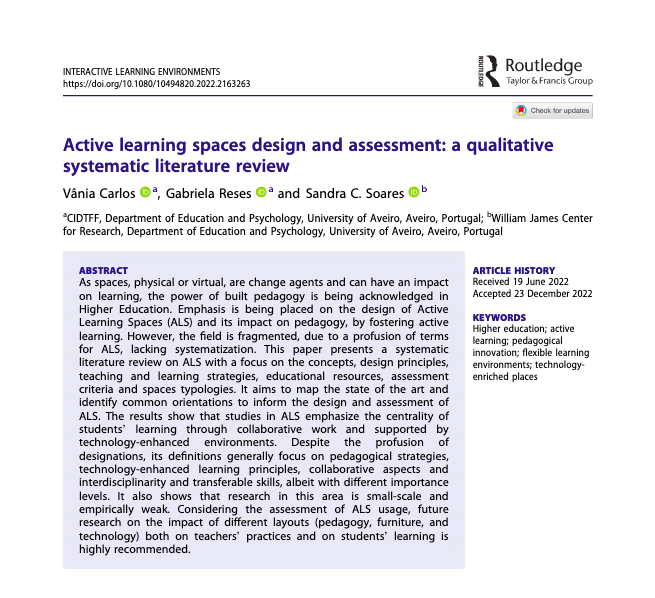Vânia Carlos (CIDTFF), Gabriela Reses & Sandra C. Soares | Interactive Learning Environments, pp.1-16
Abstract:
As spaces, physical or virtual, are change agents and can have an impact on learning, the power of built pedagogy is being acknowledged in Higher Education. Emphasis is being placed on the design of Active Learning Spaces (ALS) and its impact on pedagogy, by fostering active learning. However, the field is fragmented, due to a profusion of terms for ALS, lacking systematization. This paper presents a systematic literature review on ALS with a focus on the concepts, design principles, teaching and learning strategies, educational resources, assessment criteria and spaces typologies. It aims to map the state of the art and identify common orientations to inform the design and assessment of ALS. The results show that studies in ALS emphasize the centrality of students’ learning through collaborative work and supported by technology-enhanced environments. Despite the profusion of designations, its definitions generally focus on pedagogical strategies, technology-enhanced learning principles, collaborative aspects and interdisciplinarity and transferable skills, albeit with different importance levels. It also shows that research in this area is small-scale and empirically weak. Considering the assessment of ALS usage, future research on the impact of different layouts (pedagogy, furniture, and technology) both on teachers’ practices and on students’ learning is highly recommended.
– – – – –
Referência:
Carlos, V., Reses, G, & Soares. S. C. (2023). Active learning spaces design and assessment: a qualitative systematic literature review. Interactive Learning Environments, 0, (ahead-of-print), 1-16. https://doi.org/10.1080/10494820.2022.2163263





